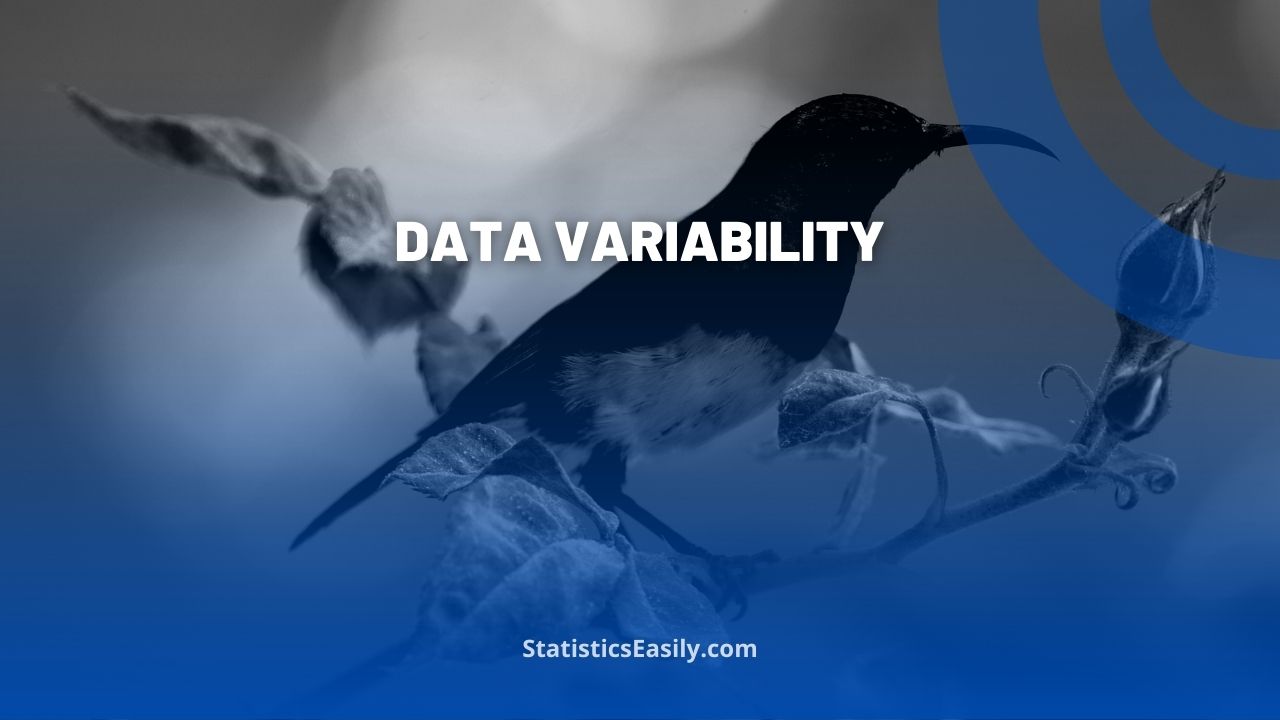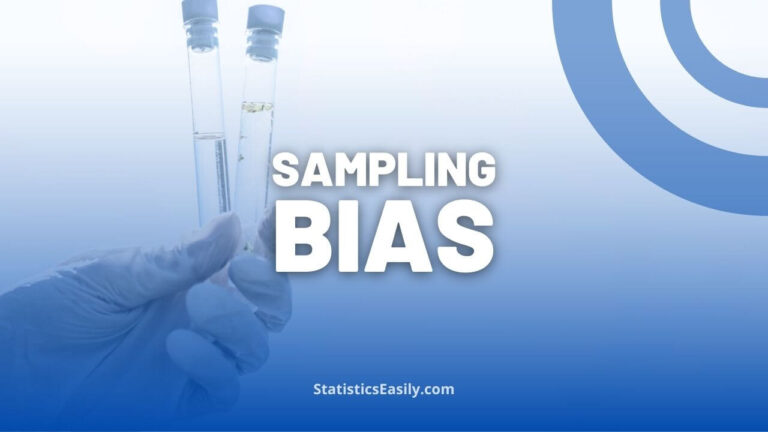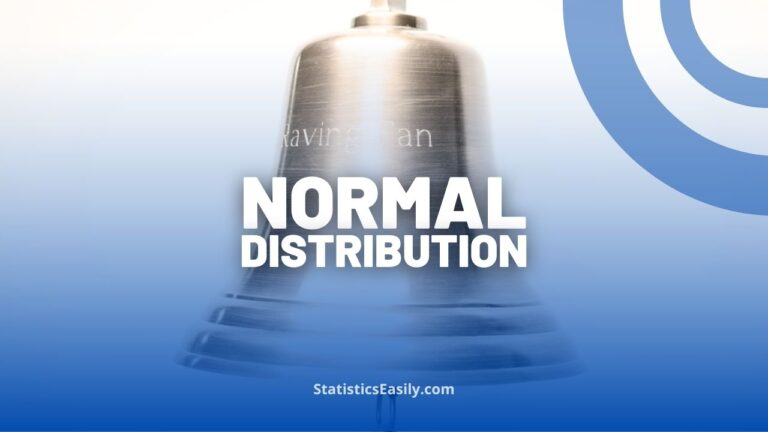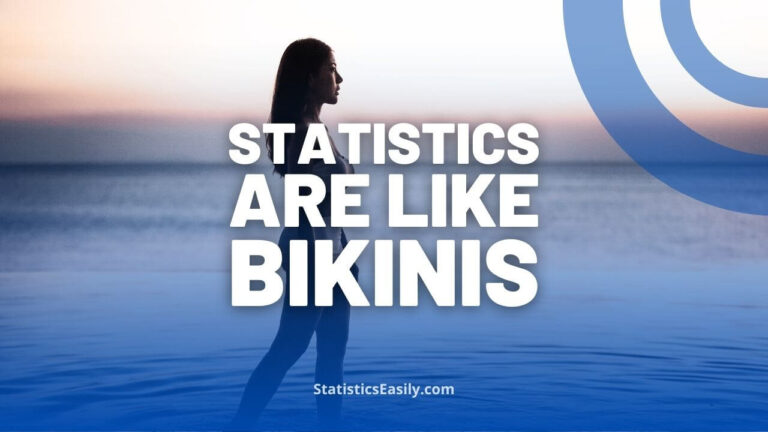The Impact of Data Variability on Statistical Conclusions
You will learn how Data Variability is a cornerstone for robust statistical analysis and informed decision-making.
Introduction
In statistics and data analysis, Data Variability stands as a sentinel, determining the reliability and validity of our conclusions. This fundamental concept is the essence of variability within a dataset, and it profoundly influences the outcomes of statistical tests and, consequently, the decisions we make based on these analyses.
Imagine you are at the heart of a labyrinthine orchard, where each path represents a different set of data points — some paths are straight and narrow, indicative of low variability. In contrast, others are wide and winding, showcasing high variability. The path you choose, or rather the variability inherent in your data, can lead to vastly different destinations — different statistical conclusions.
But why is Data Variability so pivotal? It dictates our confidence in our results and impacts the type of statistical tests we select and their subsequent results. Think of it as the pulse of your data, with each beat echoing the truth about your findings’ precision.
From the magnifying glass of a researcher to the executive decisions of a CEO, understanding Data Variability is not just academic — it is a cornerstone for robust statistical analysis and informed decision-making.
This article will explore how Data Variability shapes our interpretations of data and why it’s an indispensable component of sound analytical practice. Whether you’re a seasoned statistician or a data science enthusiast, the insights gleaned here will be critical.
Highlights
- Data Variability dictates the confidence level in statistical results.
- Variability influences the choice of statistical tests and their outcomes.
- Error bars visualize variability and signal data reliability.
- Ignoring variability can lead to incorrect conclusions in studies.
- Best practices in reporting data ensure clarity on variability.
Ad Title
Ad description. Lorem ipsum dolor sit amet, consectetur adipiscing elit.
How Data Variability Influences Decision-Making
The concept of Data Variability is central to the realm of statistical analysis and decision-making processes. In this article, you will understand how variability can alter the course of data interpretation and, ultimately, the decisions that are based on statistical conclusions. This is not just an academic exercise; real-world applications and implications hinge on a clear grasp of this concept.
Variability is the degree to which data points in a dataset differ from each other and the mean. It’s a measure of the data’s spread, and it’s fundamental because it can dramatically affect the perceived reliability of the data. Decision-makers rely on statistical conclusions to predict future trends, understand current situations, and infer correlations between variables. When variability is not adequately considered, these conclusions may be misleading.
Measuring Data Variability is typically done using range, variance, and standard deviation. Each measure offers insights into how data points are dispersed around the mean. A dataset with high variability might indicate a more extensive spread of data points, affecting the reliability of statistical estimates such as the mean. On the other hand, low variability suggests that the data points are more tightly clustered around the mean, potentially making the mean a more reliable estimate.
The Choice of Statistical Tests is also influenced by variability. For example, high variability within groups being compared might obscure any fundamental differences, leading to a Type II error where a significant effect is missed. Conversely, low variability can make trivial differences appear significant, potentially leading to a Type I error where a non-significant effect is falsely interpreted as significant.
Error Bars in graphical representations are direct indicators of variability. They help visualize the uncertainty in the data and aid in assessing the reliability of the data points. Understanding error bars is critical for interpreting graphs accurately, as they can indicate whether observed differences in data are meaningful.
The article will delve into these aspects of Data Variability in greater detail, providing the necessary tools to evaluate data critically. By the end of this read, you’ll be equipped to integrate a thorough understanding of variability into your analytical toolkit, enhancing both the precision of your analyses and the quality of your decision-making processes.
In practical terms, this knowledge is invaluable for anyone involved in data-driven fields. Whether crafting business strategies, conducting scientific research, or analyzing market trends, an appreciation for data variability will guide you toward more reliable and valid conclusions.
This overview is just the beginning. As we progress, each section will build upon the last, ensuring that by the conclusion, you will understand Data Variability and be able to apply this understanding in practical and meaningful ways.
The Concept of Data Variability
Definition and Significance
Data Variability is a statistical measure that quantifies the extent to which data points in a set diverge from the average or mean. It is significant because it provides insights into the spread and consistency of data. This concept is crucial for understanding the reliability of statistical metrics, such as the mean or median, and determining the significance of the findings drawn from the data. High variability might suggest a diverse data set with potential outliers, while low variability indicates uniformity.
Different Types of Variability: Within-Group and Between-Group
There are two primary types of variability that statisticians analyze:
1. Within-Group Variability: This refers to how the data points are spread within a single group or category. It’s an assessment of homogeneity; the lower the within-group variability, the more homogenous the group is.
2. Between-Group Variability: This indicates the extent of difference or diversity between multiple groups or categories. It is used to compare the means of different groups and to understand if they differ significantly.
Understanding both types of variability is essential when conducting analyses like ANOVA (Analysis of Variance), where the aim is to determine whether there are any statistically significant differences between the means of three or more unrelated groups.
Ad Title
Ad description. Lorem ipsum dolor sit amet, consectetur adipiscing elit.
How Variability is Measured in Statistics
In statistics, variability is commonly measured using the following:
Range: The difference between a data set’s highest and lowest values.
Interquartile Range (IQR): This measures the middle 50% of the data and is the difference between the 75th percentile (Q3) and the 25th percentile (Q1).
Variance: It quantifies the average squared deviations from the mean, measuring how data points are spread out from their average value.
Standard Deviation: The square root of the variance, providing a measure of the spread of the data points about the mean in the same units as the data.
Each of these measures gives a different perspective on variability, and the appropriate measure will depend on the specific circumstances and requirements of the analysis being performed. For example, while the range is the most straightforward measure of variability, outliers greatly influence it. On the other hand, the IQR provides a better measure of variability for skewed distributions, and standard deviation is most meaningful for normally distributed data.
In conclusion, Data Variability is a pillar of statistical analysis. Understanding and correctly measuring variability ensures that our analyses, interpretations, and subsequent decisions are based on solid and reliable evidence.
The Role of Variability in Statistical Significance
Explanation of Statistical Significance
Statistical significance is a determination that an observed effect in data is not likely due to chance alone. This concept is integral to hypothesis testing, where researchers assess whether there is enough evidence to reject a null hypothesis. Statistical significance is typically expressed through a p-value, which measures the probability of observing the results — or more extremely — assuming the null hypothesis is true.
The Relationship Between Variability and Significance Testing
The role of Data Variability in statistical significance is foundational. Variability impacts the standard error, affecting test statistics and p-value calculation. High variability in data often leads to a more significant standard error, making it more challenging to achieve statistical significance. A larger variability implies more uncertainty about the effect size or mean difference. Conversely, low variability can lead to a smaller standard error. It may make it easier to find statistically significant results, assuming an actual effect is present.
Examples of How Data Variability Can Alter Conclusions
For instance, consider a clinical trial testing a new drug’s effectiveness. Suppose the patient outcomes (e.g., symptom reduction) show low variability. In that case, the study might demonstrate a significant effect of the drug, as even a small average improvement could be statistically significant. On the other hand, if patient outcomes show high variability, the same average improvement might not be significant because the wide range of outcomes could suggest the improvement is due to random chance rather than the drug’s efficacy.
Another example can be seen in educational testing. Suppose a new teaching method is being evaluated, and the test scores across students are highly variable. In that case, proving the method’s effectiveness may be difficult. The high variability could mask the teaching method’s impact. In contrast, if the scores were less variable, it would be easier to discern whether the teaching method had a significant effect.
In conclusion, understanding and accounting for Data Variability is crucial in statistical testing. It informs the selection of appropriate statistical methods and guides the interpretation of results. A clear grasp of how variability affects significance can prevent misinterpretation of data and ensure that conclusions drawn from statistical analyses are valid and reliable.
Visualizing Data Variability: The Power of Error Bars
What are Error Bars, and What Do They Represent
Error bars are graphical representations that extend from the data points in a graph, providing a visual cue about the variability of the data. They indicate the uncertainty, error, or variability in a measurement. Typically, error bars represent the confidence intervals, standard errors, standard deviations, or range of the data, depending on the context and the specific type of error bar used.
Different Types of Error Bars and What They Communicate About Data Variability
There are several types of error bars, each serving a specific purpose:
Standard Error Bars: These represent the standard error of the mean and provide a sense of how far the sample mean is likely to be from the population mean.
Standard Deviation Bars: They depict the range around the mean encompassing the standard deviation value, indicating the spread of individual data points.
Confidence Interval Bars: These error bars show the range within which the true population mean is expected to lie, with a certain confidence level (often 95%).
The type of error bar selected can communicate different aspects of Data Variability. Standard deviation bars that are wide suggest a greater spread of individual scores. In contrast, narrow confidence interval bars imply more precision in estimating the population mean.
Interpretation of Error Bars in Scientific Graphs
Interpreting error bars requires understanding what they represent. For example, suppose error bars for two means overlap. In that case, one might infer that the difference between the sample means is not statistically significant. However, this interpretation can be more complex; it depends on the context and the exact type of error bars used.
In scientific graphs, error bars provide a visual shorthand to assess the reliability of the data. When error bars are short, it suggests the measurements are precise, and the mean is likely to be a reasonable estimate of the population parameter. Conversely, long error bars indicate higher variability and less certainty about the mean’s accuracy.
Error bars are essential for making informed judgments about the data’s significance and reliability. Without them, one might overestimate the accuracy of the data and draw incorrect conclusions. With error bars included, a graph tells a more complete story, conveying not just the central tendency of the data but also the confidence one should have in that estimate.
In summary, error bars are a critical tool in data visualization, offering valuable insights into the variability of the data and the precision of statistical estimates. Understanding how to interpret them correctly is essential for anyone engaged in data analysis and interpretation, ensuring that statistical conclusions accurately represent the data’s variability.
Ad Title
Ad description. Lorem ipsum dolor sit amet, consectetur adipiscing elit.
Case Studies: When Ignoring Variability Led to Faulty Conclusions
The annals of scientific and statistical research are replete with case studies where the oversight of Data Variability has led to flawed conclusions. These instances serve as potent lessons for considering variability in data analysis and have often led to significant improvements in research methodologies.
Historical Examples Where Overlooking Data Variability Led to Errors
One notable example is the early studies on the efficacy of hormone replacement therapy (HRT) for preventing heart disease in postmenopausal women. Initial observational studies suggested a protective effect, partly because they did not account for the variability in the women’s health status (confounding variables like lifestyle). Later, more rigorous randomized controlled trials, which accounted for such variability, found that HRT might increase the risk of heart disease, leading to a dramatic shift in medical guidelines and public health policy.
Another historical example is misinterpreting data in the Challenger space shuttle disaster. Engineers used past flight data to model the risk of failure associated with O-ring seals in colder temperatures. However, the data variability was not fully accounted for, and the model failed to predict the actual risk accurately, contributing to the tragic outcome.
Lessons Learned and the Impact on Subsequent Research Methodologies
These and other examples have underscored variability’s critical role in data interpretation. The lessons learned have had several implications for research methodologies:
More rigorous experimental design: There is now greater emphasis on designing experiments that accurately account for data variability. This includes using control groups, randomization, and blinding to reduce bias.
Improved statistical analysis: Researchers have developed more advanced statistical methods to handle variability, including multivariate analysis and regression models that can adjust for confounding variables.
Enhanced data reporting standards: Journals and regulatory bodies have implemented stricter requirements for reporting variability in data, such as requiring the reporting of confidence intervals and measures of effect size.
Increased skepticism of observational studies: There is now more caution in interpreting the results of observational studies, which cannot control variability as effectively as randomized controlled trials.
Data visualization techniques: The scientific community has adopted better data visualization practices, such as using error bars, to convey the variability and uncertainty in the data.
In conclusion, these case studies serve as a crucial reminder of the pitfalls of ignoring variability in data analysis. They have led to a heightened awareness of the need to consider variability at every research stage, from design to interpretation, and have ultimately strengthened the scientific process. As we continue to advance our methodologies and harness the power of data, recognizing and accounting for Data Variability remains a fundamental tenet of credible and reliable analysis.
Minimizing Misinterpretations: Best Practices in Data Analysis
Adopting best practices is essential to minimize misinterpretations in data analysis, especially when considering Data Variability. These practices ensure that the data support conclusions and that the data’s inherent variability is appropriately accounted for.
Strategies to Account for Data Variability
Robust Statistical Techniques: Employ statistical methods less sensitive to outliers, such as median instead of mean for central tendency or non-parametric tests that do not assume data normality.
Larger Sample Sizes: Increase sample size to provide a more accurate estimate of population parameters, as larger samples tend to have less variability.
Replication of Studies: Conduct studies multiple times or use bootstrap methods to assess the consistency of the findings.
Control Groups: Use control groups to compare and contrast results and reduce the impact of confounding variables.
The Importance of Transparency in Reporting Variability
Detailed Reporting: Always report the measures of variability, such as standard deviation and interquartile range, alongside point estimates like means or medians.
Graphical Representation: Use graphs to display variability visually and include error bars to indicate confidence intervals or standard deviation.
Discussion of Variability: Explain the impact of variability on the study’s findings and the potential limitations it imposes.
Tools and Software That Help in Variability Analysis
Various tools and software packages can assist researchers and analysts in accounting for data variability:
Statistical Software: Programs like R and Python, with libraries such as Pandas and NumPy, SPSS, and SAS, offer a range of functions to calculate and visualize data variability.
Data Visualization Tools: Software like Tableau, Microsoft Excel, Python’s Matplotlib, and Seaborn libraries can create informative visualizations that include error bars or box plots.
Simulation Software: Monte Carlo simulation tools can help assess the impact of variability on model predictions.
Adopting these best practices in data analysis is not just about enhancing accuracy; it’s also about ensuring the integrity of the research process. When analysts report on variability transparently and employ robust techniques to account for it, they contribute to a more trustworthy body of knowledge that can be reliably used for decision-making. When consistently applied, these practices lead to better research, more accurate interpretations of data, and, ultimately, more informed decisions in policy and practice.
Conclusion
Recognizing Data Variability is not just a statistical obligation but a necessity for making informed decisions based on data analysis. This article has outlined variability’s pivotal role in data, emphasizing that it can be the determining factor between accurate insights and misleading conclusions.
Throughout this exploration, we have underscored that variability should not be an afterthought but a central consideration from the beginning of the data collection process to the final analysis. It influences our confidence in results, guides the choice of statistical tests, and shapes the interpretation of those results.
Key takeaways include:
Variability Dictates Confidence: The level of variability within your data sets the tone for the certainty of your statistical conclusions.
Choice of Statistical Tests: Understanding variability is essential for selecting the appropriate statistical tests and correctly interpreting their outcomes.
Visual Representation Matters: Using error bars and other visual tools in data presentation helps signal the reliability of data and assists in accurately interpreting variability.
Best Practices Are Crucial: Employing larger sample sizes, robust statistical methods, and transparent reporting will account for variability and minimize misinterpretations.
Tools and Software Aid: Utilizing the appropriate tools and software can assist in effectively analyzing and visualizing variability.
Encouraging ongoing learning and development in statistics and data analysis is critical. As data becomes increasingly central to decision-making across all sectors, the ability to navigate and account for variability will distinguish the competent analyst from the exceptional one.
This is just the beginning of your journey with Data Variability. Continue seeking resources, engaging with new statistical methods, and applying these principles to your data analysis practice. Remember, in the world of data, variability is not just noise; it is a signal that, when understood, can lead to deeper insights and more robust conclusions.
Recommended Articles
Discover more statistical analysis and data science insights on our blog — your gateway to becoming a data-savvy professional.
Frequently Asked Questions (FAQs)
Q1: What is Data Variability? It refers to the spread or dispersion of data points within a dataset, which impacts statistical analysis and outcomes.
Q2: Why is Data Variability important in statistics? Variability affects the precision of statistical estimates and the power of hypothesis tests, impacting decision-making.
Q3: How do you measure Data Variability? Standard measures include the range, interquartile range, variance, and standard deviation.
Q4: What do error bars represent in a graph? Error bars indicate the variability or uncertainty in the data and help assess the reliability of the measurements.
Q5: Can Data Variability affect the outcome of an experiment? Yes, high variability can mask actual effects, leading to false negatives, while low variability can overstate the significance.
Q6: How does Data Variability relate to statistical significance? Significant results often require less variability within groups than between groups to detect differences.
Q7: What factors can increase Data Variability? Factors include measurement errors, sample heterogeneity, and natural fluctuations in the data.
Q8: How can one reduce the impact of variability in data analysis? Use larger sample sizes, robust statistical methods, and transparent reporting of variability measures.
Q9: What are “error bars,” and how do they relate to Data Variability? Error bars are graphical representations of data variability and can denote confidence intervals or standard deviations.
Q10: What is the best way to report Data Variability in research? Report measures of variability, such as standard deviation or interquartile range, alongside mean values.








